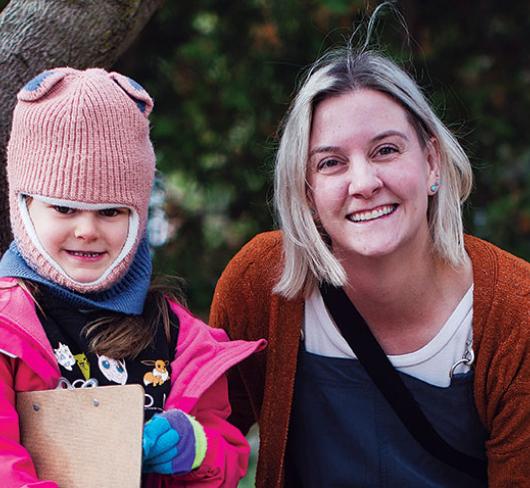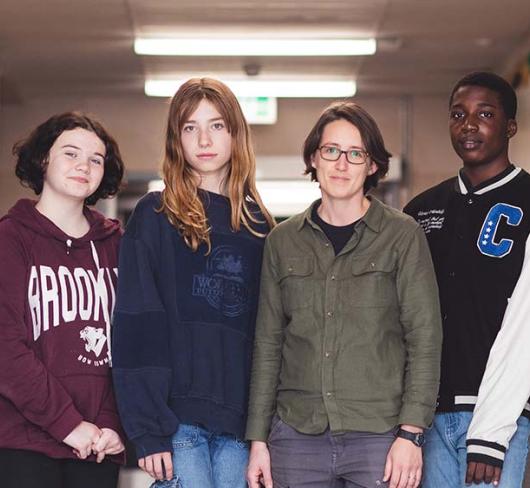Creating a Positive Classroom Environment
Last year, during a panel discussion at an ETFO provincial conference, a colleague, Jason Johnston, said this about the Chicago Fire Department: “It spends approximately 80 percent of its entire budget each year on fire prevention. They have never had to use the entire 20 percent that is left on actually putting out fires.”
This made me think about our daily instructional programs. How much time do we spend effectively planning and teaching life lessons? And how much time do we spend putting out fires?
Barrie Bennett and Peter Smilanich in their book, Classroom Management: A Thinking and CaringApproach, say: “Rules: This is your one opportunity to set yourself up for a year of happiness or a year of grief – the decision is yours.”
With this in mind, I’d like to explore what we can do as classroom teachers to invest in the education of “fire prevention”: how carefully we set up our routines in September and the degree to which we ensure that students understand how and why the rules are essential in building a respectful class community.
Teach them what you want them to do
September should be about connecting with each of your students and discovering who they are, what they are interested in, and what kind of learning opportunities motivate them. It is the most influential time to establish your behavioural expectations so that they can be carried through consistently all year.
Simply listing the rules and reading them out loud together is not enough. Consider formal lessons for the behaviours you feel strongly about. Include in your lessons an introduction and an emotional hook so that the students feel motivated about the topic. The lesson body should develop a deeper understanding of the components of the rule or routine and explain the possible consequences. Always build student ownership into the lesson body and include students’ voices and input.
Finish up each lesson with a followup that encourages students to think about, discuss, and reflect upon the need for the rule in their classroom community. Provide them with opportunities to share their responses with peers and to actively discuss their own feelings and thoughts about the rule or routine.
Repeat for each expected behaviour
This type of lesson provides your students with emotional and physical engagement while instilling a deeper understanding of the concept of cooperative learning. Create one for each of the major rules/routines that you will be consistently reinforcing throughout the entire school year; for example, problem solving, social comprehension, and respect. You can use a variety of instructional strategies and your lessons can be cross-curricular.
Think about one of your first theme units in September being related to “All about Us” as opposed to “All about Me.” This theme will reinforce the idea that your students will be living together respectfully as a class family for the year. It will be an investment that lasts and will definitely assist you in “fire prevention.” This would be a great way to introduce such strategies as concept attainment, place mat, and cooperative learning.
Assess and embed
Assess these formal lessons to ensure that each student has developed a clear understanding of the rules and possible consequences. Mind maps can be a highly effective way for students to demonstrate their knowledge of the content and the connections they have made.
Once you have taught the foundation of your rules/routines thoroughly, and students have developed a deep understanding, you simply have to reinforce them throughout the rest of the year by naturally embedding them in to all that you do.
This commitment of time and thoughtful planning will definitely assist you in building a classroom environment based on the values and character traits that we want our students to demonstrate at school and in the community.
Plan to be positive, proactive, and perceptive. Look forward to your fresh start!
AN EXAMPLE
We often place students in groups for a variety of activities and wonder why they have so much difficulty collaborating and completing the task together as assigned. If we expect our students to work effectively in groups, we must plan lessons about how to do that and provide meaningful opportunities for practice so that they make the necessary connections.
You could base a lesson on developing an understanding of the five components of cooperative learning. I call them “PIGS Face”: P–positive interdependence; I–individual accountability; G–group processing and goal setting; S–social skills; and, of course, face-to-face interaction.
Here are four suggested steps:
- Read aloud an introduction based on a cooperative learning theme. There are many fine pieces of children’s literature available that support collaboration and teamwork. Then introduce and discuss the “PIGS Face “ components. Explain the importance of each one. I have explained these components to grade 1 students in language that they understand and relate to. Role playing and modelling also work well .
- Integrate drama into the activity. Our brains love analogies. Compare cooperative learning to compo- nents that are wired together in a piece of equipment. Put the students in groups of four or five and provide each group with the name of an everyday piece of technology: for example, microwave, iPod, oven, food processor, washing machine, computer, or printer. Direct the students to develop a presentation that demonstrates each part of the technology in working, sequenced order. Each child becomes a working part, connected and wired to all other parts. Ask students to include sound effects and motion to show their piece of technology in action. The students present as a team and the other students guess what they are.
- Follow up with an art project. Provide the students with guidelines for designing posters that advertise cooperative learning for the class. Discuss the components of successful advertising: jingles, slogans, and eye-catching creativity. Students should plan, design, and create colourful posters for the school and classroom in collaborative groups of two as the culminating activity for this lesson.
- The posters can be laminated and posted. You and your students can refer to them throughout the year when they need reminders. One of my favourite posters was created by two of my grade 3 students. They used the theme of geese flying south in their V formation and emphasized that “if the geese can do it, then so can we!”
- Link their learning to their lives outside the classroom. Discussions about rules and routines at home and in the community are also effective in. Sorting similarities and differences between classroom, home, and community rules can be very powerful. This will support the students’ understanding of the meaning and need for structure.

